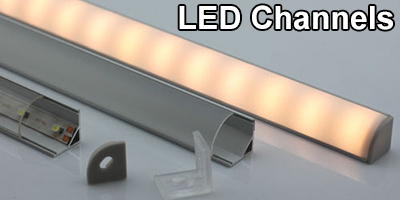I'm wondering if some knowledgeable flashaholics would have some input on this idea...
First some background info:
There's a project I'm interested in called candyfab (http://www.candyfab.org/).
It's basically a DIY 3D printer / rapid prototyping machine that uses sugar as a medium. It builds 3D objects one layer at a time, by melting areas of granulated sugar on a flat surface, then depositing a fresh layer of sugar on top and melting parts of that, etc. With enough layers, you can build a full 3d object.
The reason sugar is used is because it is cheap and has a low melting point. However the concepts developed for this machine may be applied to other materials too, such as plastic or possibly even some metals. Already they have shown it can be effective with some plastics.
Currently the printing method involves blowing a gentle, thin stream of hot air directly at the sugar to melt it.
I have a feeling that using a focused beam of light would be more effective, allowing better resolution and precision when printing these 3d objects.
So, I thought I'd brainstorm on here for how one would go about designing a replacement "print head" that uses a light bulb as a heat source instead.
I think the main goals would be something that is:
-inexpensive
-relatively safe
-ability to focus the beam tightly (~1mm maybe?)
-operating on 120V would probably be best, but not necessarily mandatory
-smaller overall size is probably better
-variable power
I guess my main questions would be:
1) What type of bulb would be good for such an application?
-probably the smaller the better, as long as it has enough power to do the job
-finding the right power level may require some experimentation, hence variable power would be a plus
2) What could be used for a reflector?
-plastic reflectors might melt depending on design
-i'm thinking something widely available and cheap like an aluminum can bottom or similar.
3) What sort of lens(es?) would be needed for the focusing
-need to withstand the heat, and hopefully not too costly
Please don't suggest a laser as that would be too costly and also dangerous at the power levels required for this project.
One other thing which might be worth consideration is if the bulb can handle switching on and off thousands or even millions of times. The existing hot air design is always on, and the printer simply moves quickly enough over non-printing areas that it doesn't melt. So it' not mandatory, but having that extra ability to switch the heat on and off might also give some improvement in output quality.
First some background info:
There's a project I'm interested in called candyfab (http://www.candyfab.org/).
It's basically a DIY 3D printer / rapid prototyping machine that uses sugar as a medium. It builds 3D objects one layer at a time, by melting areas of granulated sugar on a flat surface, then depositing a fresh layer of sugar on top and melting parts of that, etc. With enough layers, you can build a full 3d object.
The reason sugar is used is because it is cheap and has a low melting point. However the concepts developed for this machine may be applied to other materials too, such as plastic or possibly even some metals. Already they have shown it can be effective with some plastics.
Currently the printing method involves blowing a gentle, thin stream of hot air directly at the sugar to melt it.
I have a feeling that using a focused beam of light would be more effective, allowing better resolution and precision when printing these 3d objects.
So, I thought I'd brainstorm on here for how one would go about designing a replacement "print head" that uses a light bulb as a heat source instead.
I think the main goals would be something that is:
-inexpensive
-relatively safe
-ability to focus the beam tightly (~1mm maybe?)
-operating on 120V would probably be best, but not necessarily mandatory
-smaller overall size is probably better
-variable power
I guess my main questions would be:
1) What type of bulb would be good for such an application?
-probably the smaller the better, as long as it has enough power to do the job
-finding the right power level may require some experimentation, hence variable power would be a plus
2) What could be used for a reflector?
-plastic reflectors might melt depending on design
-i'm thinking something widely available and cheap like an aluminum can bottom or similar.
3) What sort of lens(es?) would be needed for the focusing
-need to withstand the heat, and hopefully not too costly
Please don't suggest a laser as that would be too costly and also dangerous at the power levels required for this project.
One other thing which might be worth consideration is if the bulb can handle switching on and off thousands or even millions of times. The existing hot air design is always on, and the printer simply moves quickly enough over non-printing areas that it doesn't melt. So it' not mandatory, but having that extra ability to switch the heat on and off might also give some improvement in output quality.

